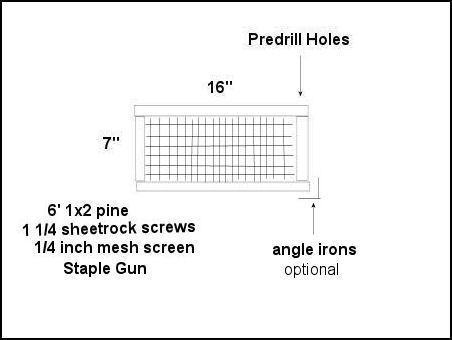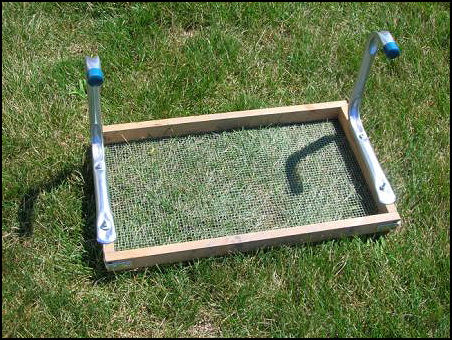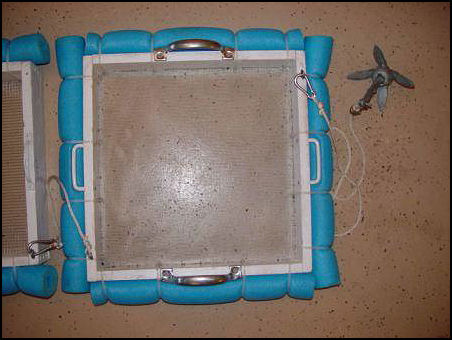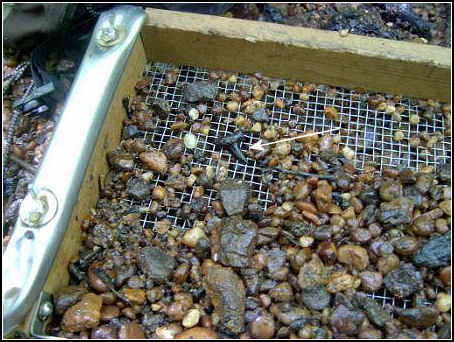|
Building a Sift
The most common method of
collecting fossils in Monmouth County is called sifting or
screening. The concept is rather simple. Mother Nature
slowly erodes the fossil bearing layers away depositing the
fossils and gravel into the local streams. Armed with little
more than a shovel and a shift, the basic idea is too shovel
the gravel into the sift. Shake it around a bit to get rid
of the sand and smaller pebbles, then search through the remaining gravel.
In my wanderings I've seen everything from plastic sand toys to complex
screens with folding legs. All of these will work, some
better than others. What you use is really a matter of how
often you go and personal preference. I like to use a
variation of what is probably the most common design, a
simple wooden frame with 1/4 inch mesh screen stapled to the
bottom, light, inexpensive and with a few minor additions
very durable.

The basic sift.
These dimensions will allow the sift to be made from
a single 6' stock 1x2 pine. For smaller children I would
suggest reducing the size. I use two 1 1/4 inch sheetrock or
decking screws to secure each corner (predrill the holes to
prevent splitting). Secure the 1/4 inch mesh screening with
1/2 or 3/8ths inch staples. Use caution when working with
the screening, the edges are sharp. I hammer the staples and
screening flat against the wood and check that no sharp
edges are exposed. Adding angle irons to the outside corners
will extend the life of the sift. You can nail molding, or
if you own a table saw, rip a thin strip of wood to cover
where the screening is stapled to the frame. I do this on
sifts I build for children to completely cover the sharp
edges of the mesh.
Note: The openings on window screening are too
small for normal fossil hunting. Use the screening with 1/4
inch openings.

I've added handles to this sift. Nice in the stream, but has
a tendency to snag on vines
when hiking through the woods. I use a smaller plain wood frame screen
that
attaches to my backpack when exploring.

This is one of the more elaborate setups I've seen. A second
sift fits inside
the first with a finer mesh to catch smaller fossils. Foam
is attached to the frame
so the sift floats. This one even has a anchor.
This picture was emailed to me awhile back and I no longer
have the name of the
person who built this.

The bottom line.
Happy Hunting!
John
|